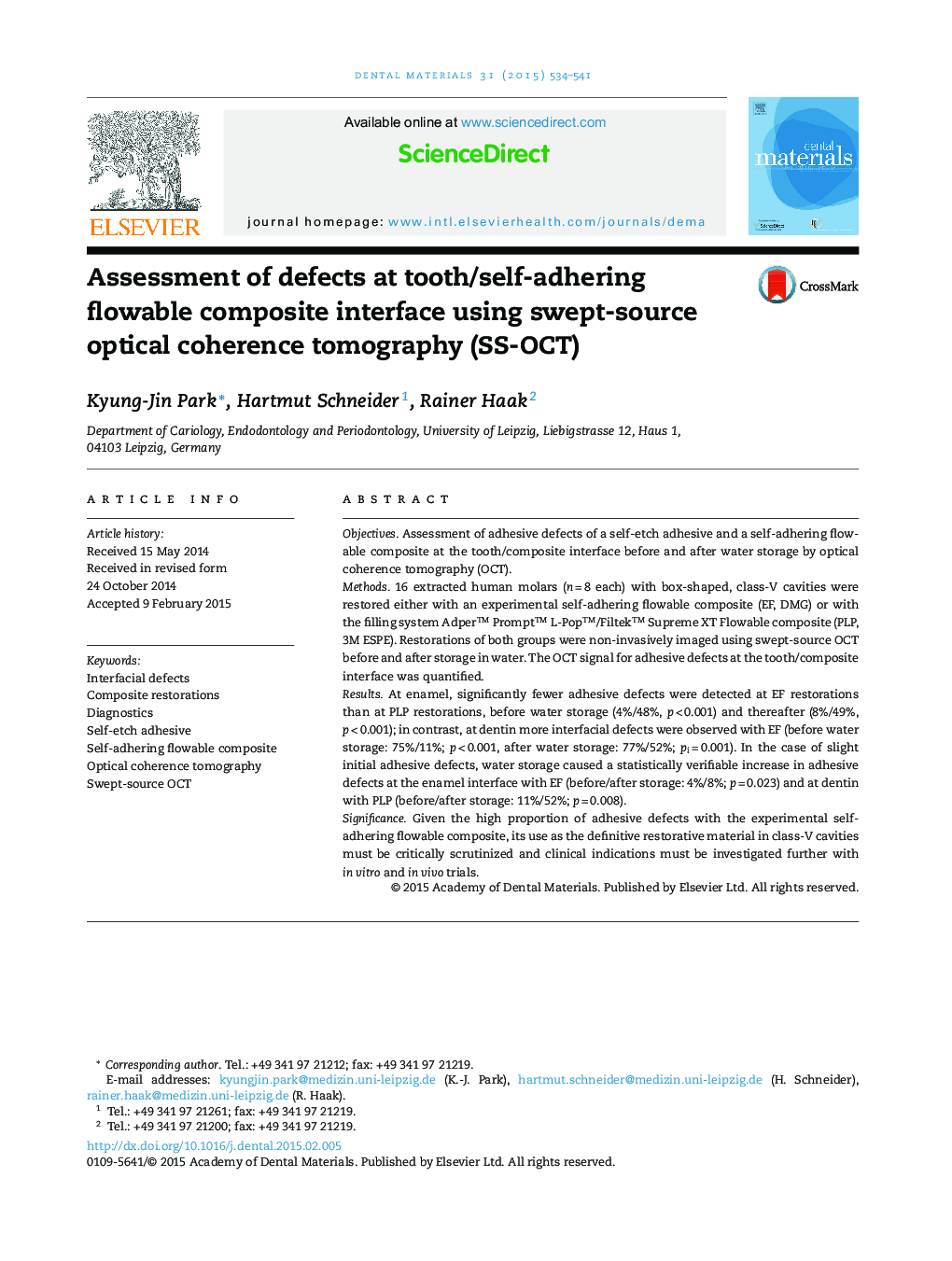| کد مقاله | کد نشریه | سال انتشار | مقاله انگلیسی | نسخه تمام متن |
|---|---|---|---|---|
| 1420679 | 986379 | 2015 | 8 صفحه PDF | دانلود رایگان |

• Adhesive defects were detected and assessed by optical coherence tomography.
• At enamel, EF showed significantly fewer adhesive defects than PLP.
• At dentin, EF showed more adhesive defects than PLP.
• We would recommend clinical use of EF on very small cavities bounded by enamel.
• The use of EF as a definitive restorative material must be put under scrutiny.
ObjectivesAssessment of adhesive defects of a self-etch adhesive and a self-adhering flowable composite at the tooth/composite interface before and after water storage by optical coherence tomography (OCT).Methods16 extracted human molars (n = 8 each) with box-shaped, class-V cavities were restored either with an experimental self-adhering flowable composite (EF, DMG) or with the filling system Adper™ Prompt™ L-Pop™/Filtek™ Supreme XT Flowable composite (PLP, 3M ESPE). Restorations of both groups were non-invasively imaged using swept-source OCT before and after storage in water. The OCT signal for adhesive defects at the tooth/composite interface was quantified.ResultsAt enamel, significantly fewer adhesive defects were detected at EF restorations than at PLP restorations, before water storage (4%/48%, p < 0.001) and thereafter (8%/49%, p < 0.001); in contrast, at dentin more interfacial defects were observed with EF (before water storage: 75%/11%; p < 0.001, after water storage: 77%/52%; pi = 0.001). In the case of slight initial adhesive defects, water storage caused a statistically verifiable increase in adhesive defects at the enamel interface with EF (before/after storage: 4%/8%; p = 0.023) and at dentin with PLP (before/after storage: 11%/52%; p = 0.008).SignificanceGiven the high proportion of adhesive defects with the experimental self-adhering flowable composite, its use as the definitive restorative material in class-V cavities must be critically scrutinized and clinical indications must be investigated further with in vitro and in vivo trials.
Journal: Dental Materials - Volume 31, Issue 5, May 2015, Pages 534–541